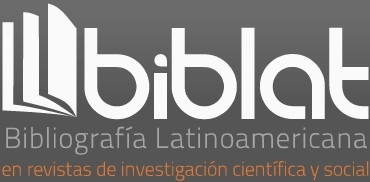Brand on the run: a semiotic look at Slow Food
DOI:
https://doi.org/10.35494/topsem.2011.2.26.103Keywords:
-Abstract
In this article, a semiotic definition of slowness is constructed
—concept and value, lexeme and object, social praxis with
different forms of textual enactments— based on an individual
research project in which the theme of gastronomy comes into
play, on one hand, that of the body and of nature, and on the
other hand, that of brand communication and political discourse.
From this, the recurrence to the phenomenon of Slow Food, key
topic, since it interprets all these dimensions of sense and culture,
which frequently the theory of meaning insists on dealing with
separately, therefore excluding the possibility of explaining said
phenomenon reciprocally, and therefore of understanding it.
Through a detailed analysis of two key texts of this world-wide
movement —the manifest of its creation and the logo— are
made to stand a test of slowness in the various levels of the
generative path of sense, and not only within a broader semantic
category that opposes it to speed.
Downloads
References
AGNELLO, Marialaura (2003). “Un baffetto vittorioso e vincente. Il logo Nike”. arco-journal [www.arcojournal.unipa.it].
___________ (2004). “Don Giovanni felice. Intorno al logoMcDonald’s”. Comunicando, 4.
ANDREWS, Geoff (2008).The Slow Food story. London: Pluto Press.
DE GRAZIA, Victoria (2005). Irresistible Empire. Cambridge (Mass.): Harvard University Press.
FABBRI, Paolo (2000). Elogio di Babele. Roma: Meltemi.
FLOCH, Jean-Marie (1990). Sémiotique, marketing et communication. París : Puf [Version en español: (1996). Semiótica, marketing y comunicación. Barcelona: Paidós].
___________ (1995). Identités visuelles. París : Puf.
FONTANILLE, Jacques (1989). Les espaces subjectives. París : Hachette.
GREIMAS, Algirdas J. (1983). Du sens II. París : Seuil.
___________ (1987). De l’imperfection. Périgueux : Pierre Fanlac [Trad. al español de Raúl Dorra. De la imperfección. México: FCE.].
HAMMAD, Manar (2006). Lire l’espace, comprendre l’architecture.Limoges : Pulim.
LATOUCHE, Serge (2007). Petit traité de la décrissance sereine. París : Mille et une nuits.
MARRONE, Gianfranco (2001). Corpi sociali. Torino: Einaudi.
___________ (2007). Il discorso di marca. Roma/Bari: Laterza.
___________ (2010). L’invenzione del testo. Roma/Bari: Laterza.
PETRINI, Carlo (2001). Slow food. Le ragioni del gusto. Roma/Bari:Laterza.
___________ (2005). Buono, giusto, pulito. Torino: Einaudi.
___________ (2009). Terra madre. Firenze: Giunti.
___________ e Padovani, Gigi (2005). Slow Food revolution. Milán: Rizzoli.
RICŒR, Paul (1990). Soi-même comme un autre. París : Seuil [Versión en español: (1996). Sí mismo como otro, México: Siglo XXI].
SEMPRINI, Andrea (2006). La marque, une puissance fragile. París : Vuibert.
ZILBERBERG, Claude (1993). « Seuils, limites, valeurs ». On the Borderlines of Semiotics. Acta Semiótica Fennica II, Imatra, Oylä-Vuoksi.
Downloads
Published
How to Cite
Issue
Section
License

Tópicos del Seminario is licensed under a Creative Commons Reconocimiento-NoComercial-CompartirIgual 4.0 Internacional License.














